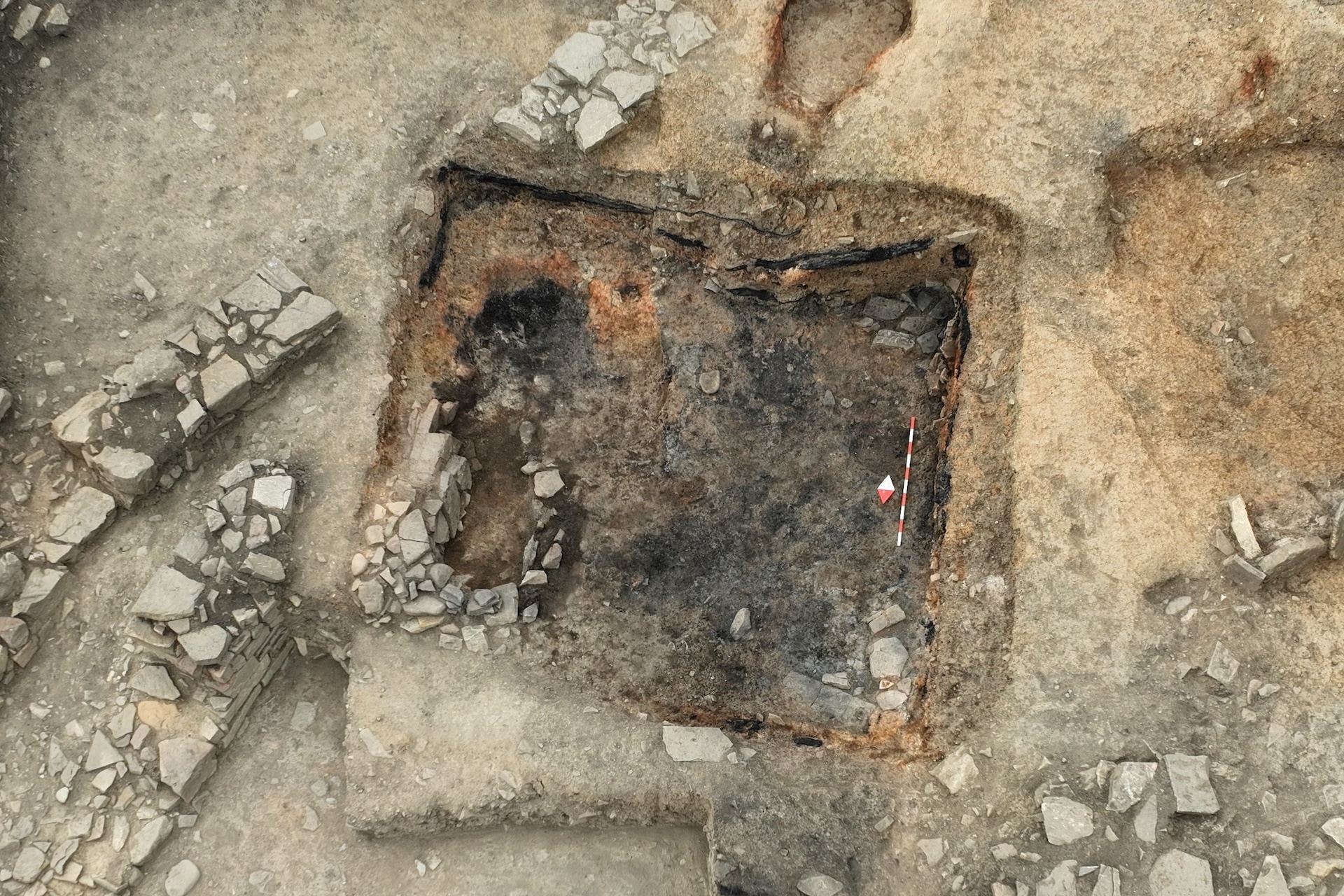
Archaeologists in Bulgaria have unearthed five gold coins dating to the time of the emperor Justinian the Great (ruled from A.D. 527 to 565). Although it is not unusual to discover coins during excavations, these ones were located on the floor of a 10th-century house — suggesting the dwelling's medieval occupants may have kept the coins as a kind of heirloom or artifact.
The coins were found in August during an archaeological dig in the village of Debnevo in northern Bulgaria. Excavations in Debnevo and the nearby fortress, which was built in the early fifth century, have been ongoing since 2019, and archaeologists have so far found the remains of a large fourth to third century B.C. settlement, as well as evidence of habitation from the fourth to sixth centuries A.D., when the area was part of the Byzantine Empire.
During a recent expedition, archaeologists excavated a medieval dwelling in Debnevo that had been badly damaged by fire. The occupants appeared to have abandoned their house following the fire in the 10th century, and the team recovered iron tools, including two sickles and two axes; a belt buckle; ceramic vessels; and three bronze rings — in addition to five gold coins that were around 400 years older than the house.
The coins were minted during the reign of Justinian the Great, whose rule saw the Byzantine Empire reach its greatest geographical extent in the mid-sixth century, after the Western Roman Empire had fallen. Justinian's legacy includes the publication of a body of Roman laws as well as the development of new art and architectural styles that would come to be known as Byzantine. One of Justinian's goals was to "restore the empire of the Romans", which he accomplished by reestablishing control over Western European and North African provinces.
Related: 700-year-old coin depicting Jesus and medieval king discovered in Bulgaria
All five coins are of the same type: a "tremissis" — a small gold coin worth one-third of a "solidus" — that depicts the emperor wearing a pearl diadem on the front, while the back depicts the personification of Victory holding a wreath in her right hand and a cross and globe in her left. The inscription on the front reads "Our Lord Justinian Perpetual Augustus," a reference to the first Roman emperor, whose name was later used to refer to all emperors, while the back reads "Victory of the Augusts." Two of the coins, likely burned in the fire that destroyed the house, are stuck together.

"The dwelling was built on the remains of an early Byzantine building," expedition leader Stiliyan Ivanov, an archaeologist at the National Archaeological Institute with Museum at the Bulgarian Academy of Sciences, told Live Science in an email. "Therefore, we assume that the coins were found during the construction of the early medieval dwelling. Our working hypothesis is that the owners kept the coins because of the gold value."
Although it was never a large settlement, Debnevo has a deep history, as the archaeological team has found evidence of structures, burials and artifacts dating as early as 5000 B.C. and as late as the 18th century.







